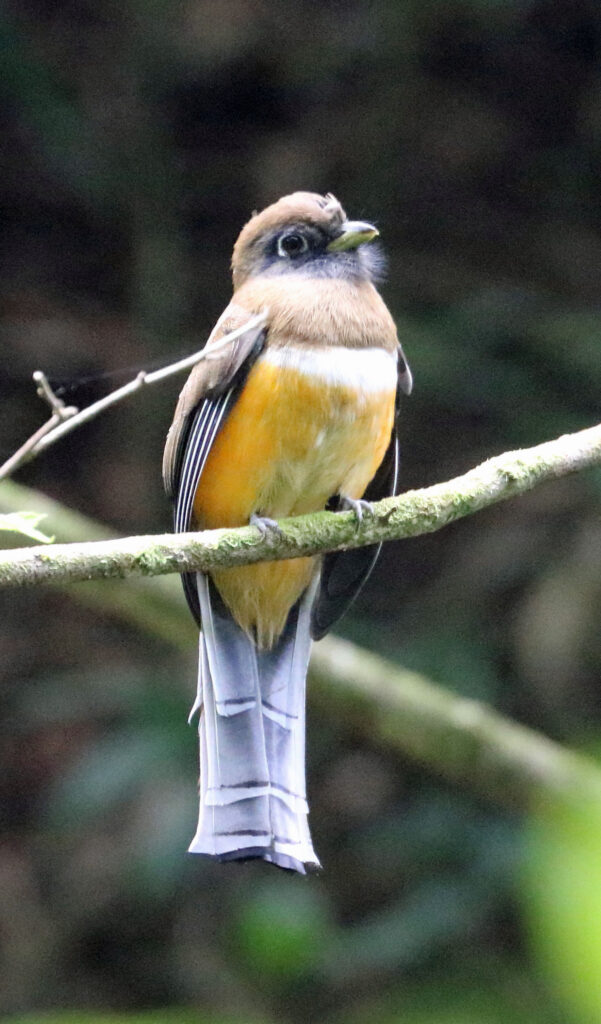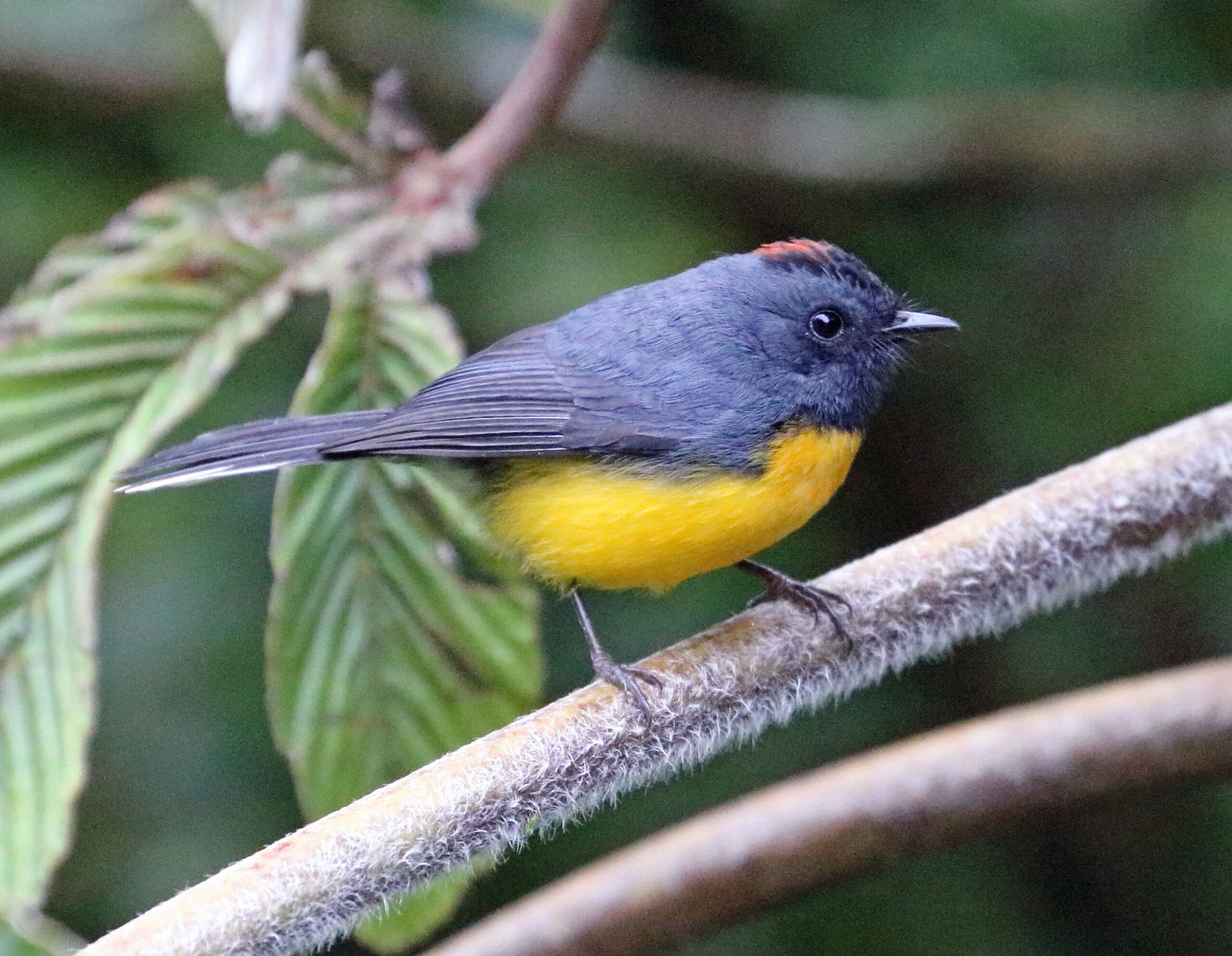Many annoying things have kept me (Sneed) from birding so far this year. Not so Braden, who is enjoying a semester abroad in the town of San Ramón, Costa Rica. In just his first few days, he tallied almost 100 Life Birds—and he’s just getting started. Here is his first report, from a weekend trip to the cloud forest haven of Monteverde, where I visited to research a book almost thirty years ago.
The town of San Ramón and its colorful, ramshackle buildings sits in an ecological crossroads as far as Costa Rica’s ecosystems are concerned, located near Caribbean slope rainforest, Pacific slope dry forest and high-altitude cloud forest. The dry tropical forest, situated in the northwest part of the country, is a habitat characterized by distinct dry and wet seasons. The southwestern part of the country (including the Osa Peninsula) holds tropical rainforest, and these two habitats constitute the “Pacific Slope.” The “Caribbean Slope,” meanwhile, is all rainforest, although its communities differ from those of the Pacific rainforests. Why? Several large mountain ranges run through the middle of the country, reaching heights of 3,800m (about 12,500 feet) in the Talamancas to the south. These mountain ranges not only separate species living on the Pacific Slope from those living on the Caribbean Slope, but also hold another, incredibly important ecosystem: the cloud forest. This ecosystem is the one I’d been most wanting to visit since learning about it a decade ago, and so, on the first of our semester’s sixteen three-day weekends, two fellow UMaine students, Kiley Chen and Leah Hart, and I caught the bus towards Santa Elena for a two-night adventure.

The long and winding bus ride did not do good things for our stomachs, but soon enough, we arrived in Santa Elena. The next morning, we caught a taxi up the mountain to the Monteverde Cloud Forest Biological Reserve. Despite the fact that this reserve is a well-known tourist destination, especially during the dry season (December-April), Kiley, Leah and I were the first people to arrive, and proceeded to spend the next seven hours exploring the cloud forest, hiking nearly every trail available to us. It blew our minds.
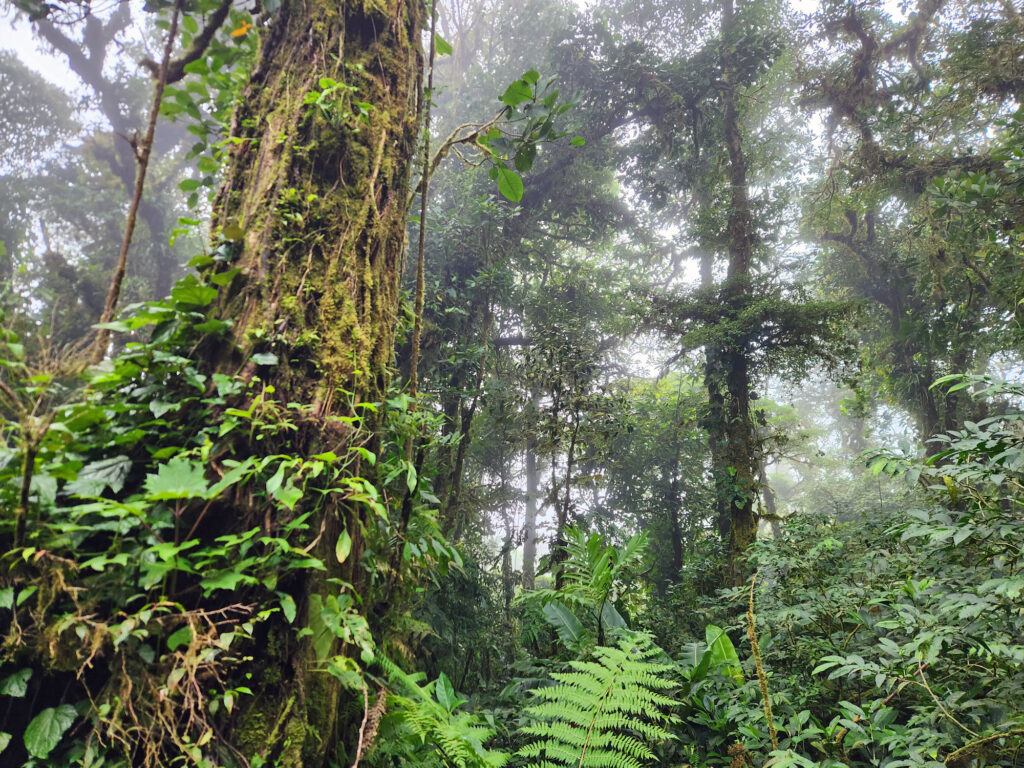
A forest with nearly 100% humidity year-round is a botanist’s dream. Giant bromeliads grew from every branch, and we could hardly see the bark on the trees because of the high densities of moss and lichen. Thick, woody vines (known as lianas) hung down from above, and prehistoric-looking tree ferns, with the trunk of a tree and the leaves of a fern, rose above us. At one point we walked across a red, metal bridge suspended above a gully, and we could see just how the habitat had received its name. Powerful winds carried large fogbanks through the trees, and we could not see more than thirty or so feet out from any viewpoint because of the mist. These constant clouds, caused by winds from the east and high-altitude condensation, lead to the air being constantly saturated with water, allowing a luxuriance of plants to grow here. High concentrations of plants usually mean high concentrations of animals, and the animals we saw did not disappoint. Leah rescued several giant millipedes from the path during our hike, and at one point we saw a group of White-nosed Coatis approach us, completely fearless as they foraged for insects in the damp soil. From the suspended bridge we spotted a large mixed flock of birds, including Ruddy Treerunners, Spotted Barbtails, Spangle-cheeked Tanagers, Prong-billed Barbets and a variety of warblers (including some that spend the summer in Maine!). And, after returning to the entrance to ask directions, we finally found ourselves sitting on a wet bench, staring at an epiphyte-laden tree looking for Resplendent Quetzals.
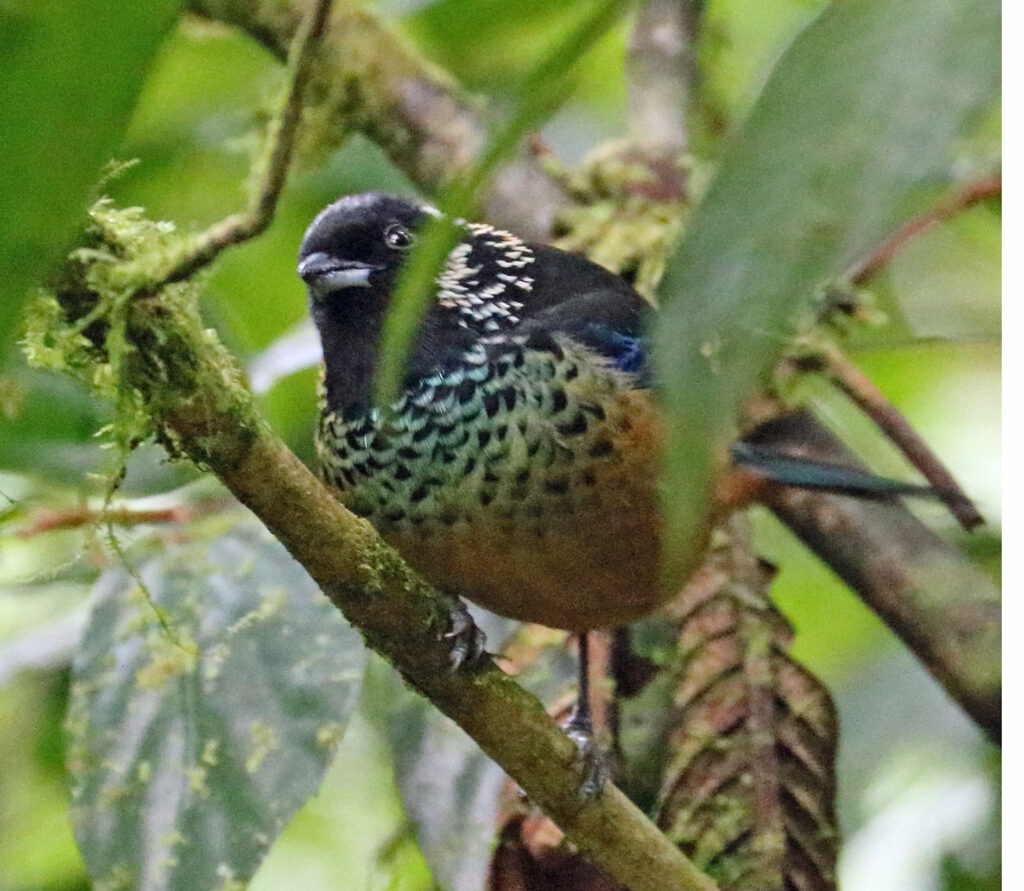
The Resplendent Quetzal is not the national bird of Costa Rica, but with all of the attention it garners, it might as well be. We spotted a female in the tree as we first arrived, admiring its deep, emerald green plumage reflecting light through the mist. The real prize we sought, however, was the male—a bird of emerald and ruby, with green tail streamers up to three feet long. These birds are altitudinal migrants, meaning that they spend the non-breeding season at lower elevations. During the breeding season, they travel upslope to the cloud forest to feed on wild avocados and raise young. They are icons of the cloud forest, a rare animal living in a rare habitat. Eventually, as we sat on that bench, we did spot a male, although the look was incredibly brief and unsatisfying. What was satisfying were the other animals that paid us a visit : Spider Monkeys. After sitting there for about thirty minutes, we suddenly spotted movement in the tree ahead of us. From the leaves emerged a pair of long-limbed, rust-orange monkeys, a mother and baby, and we watched spellbound as they swung effortlessly from branch to branch in front of us. It was awesome.
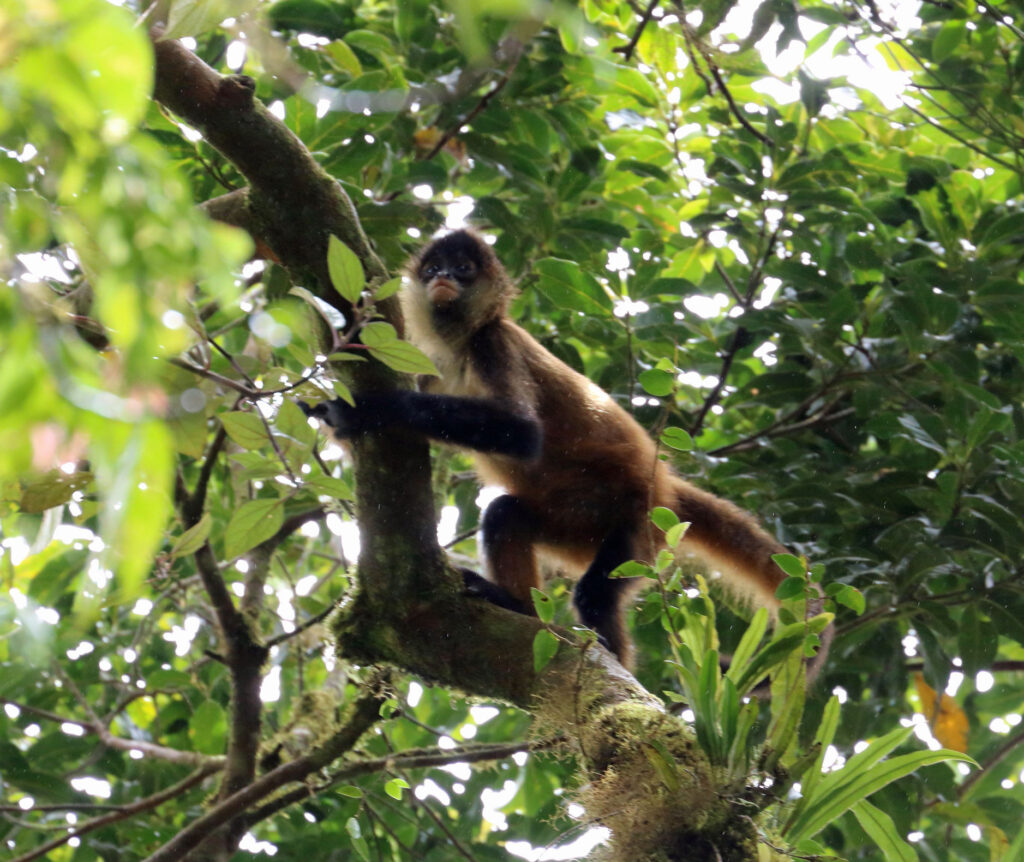
Emerging from the forest, we made a stop at Café Colibri, a restaurant known for and named after the feeders it hangs in the garden outside, and the animals that visit those feeders. At Café Colibri, we spotted seven different species of hummingbirds, almost thirty or so different individuals, each zipping right by our faces in search of sugar water. The hummingbirds had a hierarchy, with the large Violet Sabrewings bullying many of the smaller birds. My favorite of the hummers were the Purple-throated Mountain-gems, the males of which had turquoise foreheads and violet gorgets that shimmered in the sunlight.
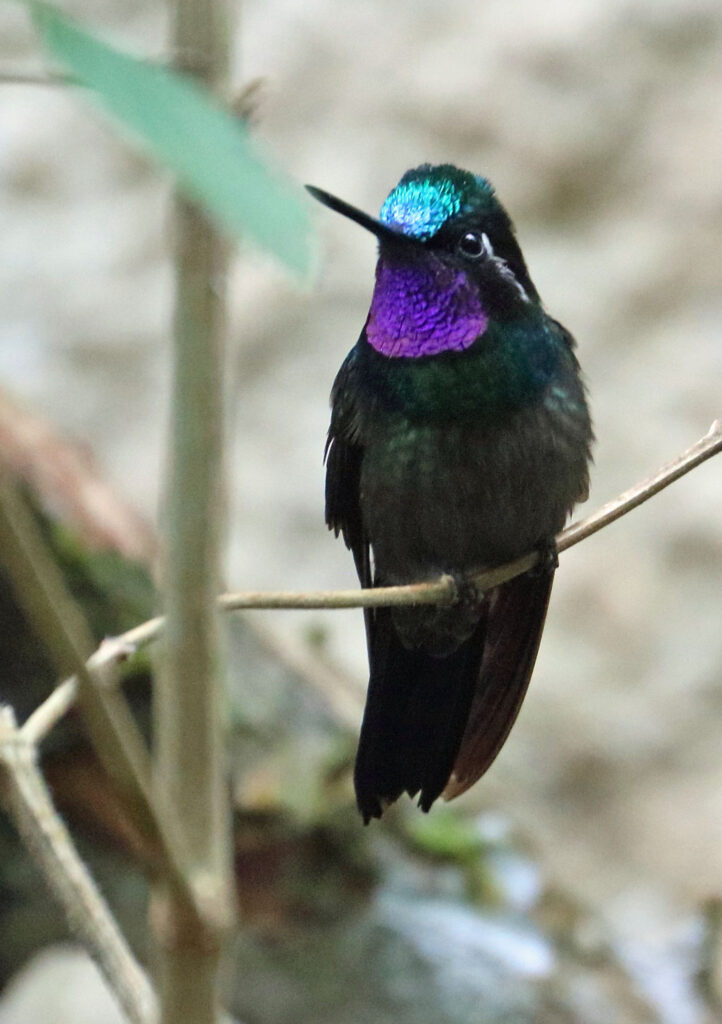
We walked back down the road to Santa Elena, admiring the rainbows formed by the mist being blown down the mountain. Following a short rest, we headed out again, this time with a guide to see what animals dwelled in the mountain forests at night. The night walk exceeded our expectations. Our guide, Brandon, pointed out all manner of animals, including Pygmy Rain Frogs, a Robust Climbing Salamander, a Horned Tarantula, an Orange-kneed Tarantula, a Stripe-sided Palm Pitviper loafing in a tree, and two Keel-billed Toucans, fast asleep above us (or they were, until someone pointed a light at them). At one point Brandon wetted a stick with his lips and used it to try to draw a tarantula out of its burrow for us. On our walk back to the entrance to the forest, we spooked a Mottled Owl from its perch in a large banana tree.
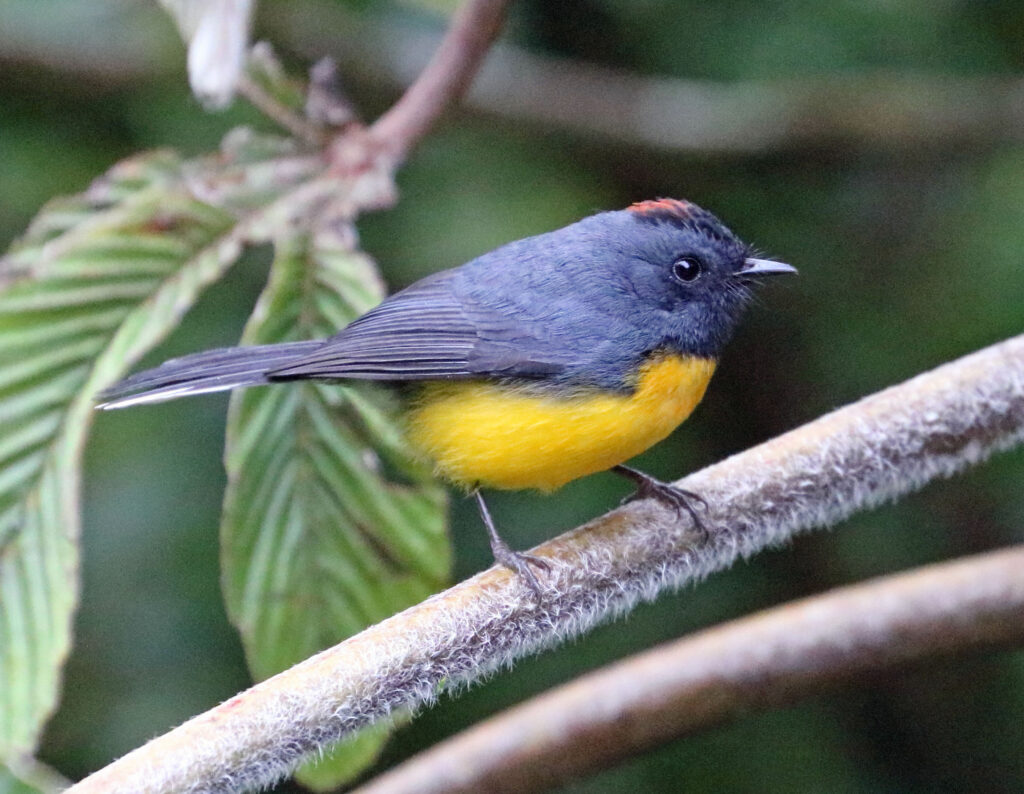
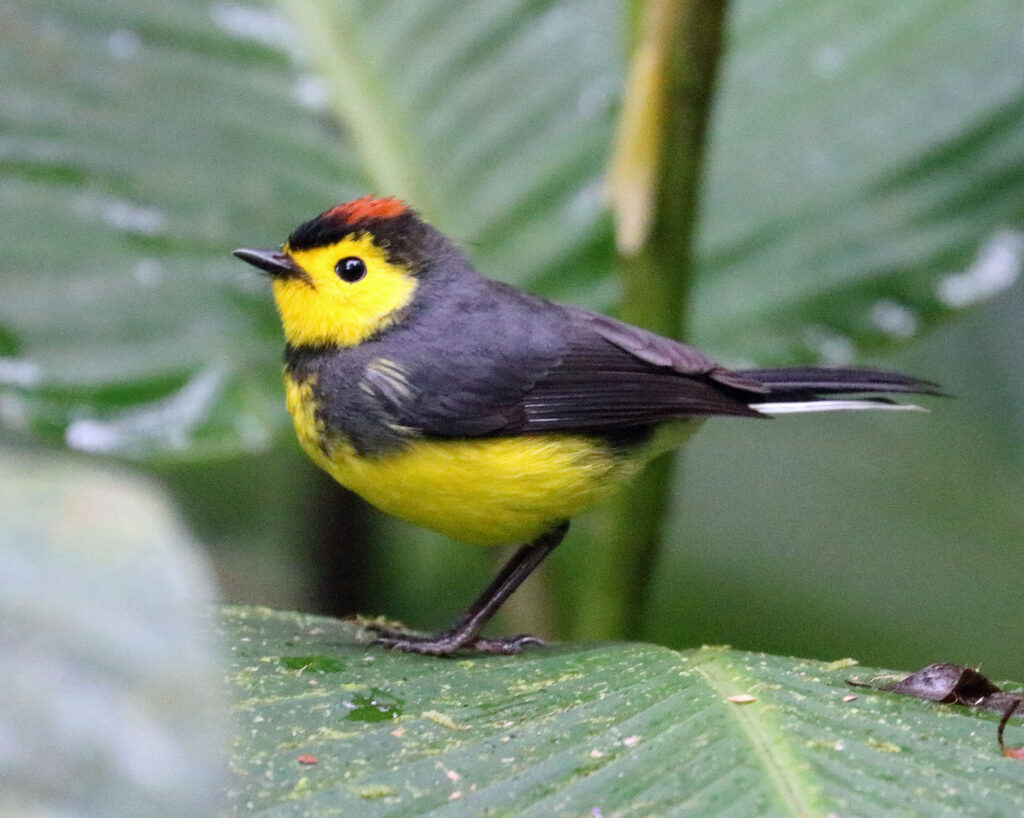
Our weekend in Monteverde abounded with sightings of wildlife, and while it may sound like an out-of-reach location for college students, it’s not! The Gilman Scholarship, a scholarship specifically provided to low-income students looking to study abroad and experience new places, is a large part of how I was able to afford going to Costa Rica this semester. If you’re looking to go to Costa Rica, or Ireland, or Japan, or anywhere else, but are worried about the costs, I highly recommend applying for the Gilman. It’s easy to apply, and can support you following your dreams of spending part of your college experience in another country. If you’re enjoying learning about my time abroad and want to have a similar experience of your own, I could not recommend the Gilman more.
Monteverde was just the first place I’ve visited since I’ve been here in Costa Rica, and I already have more weekend trips planned for the next few weeks, so be sure to check out my next blog to learn about the other cool wildlife and ecosystems I see!
